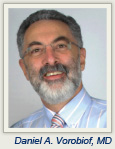 Approximately 15% of South Africa’s people have private health-care insurance and use private hospitals and clinics; another 10% also use private care paid out of pocket. However, the remaining 75% of South Africans use public health care, which is spread out over rural and urban areas.
Approximately 15% of South Africa’s people have private health-care insurance and use private hospitals and clinics; another 10% also use private care paid out of pocket. However, the remaining 75% of South Africans use public health care, which is spread out over rural and urban areas.
Although the tertiary public institutions have modern equipment, regretfully, due to budget constraints, the availability of cancer pain treatment is limited to a recommended dispensing drug list. Nonnarcotic and narcotic analgesics are available, but not long-acting transdermal patches. The most common analgesics are oral and injectable drugs. Some oral and intravenous bisphosphonates are available, as well as radiotherapy, for pain management.
Roughly 40% of South Africans live in rural areas, making it difficult to travel for specialized cancer care. Instead, many rural patients turn to traditional practitioners called sangomas, who have several social and spiritual roles, including healer, diviner, and counselor. Distrust of Western medicine has rooted sangomas’ medicinal status in the community, providing ineffective pain control with herbs and other traditional medicines. Other than political and cultural barriers of note, the main constraint on adequate pain control remains financial, especially in poor public and rural areas. ■
Disclosure: Dr. Vorobiof reported no potential conflicts of interest.

